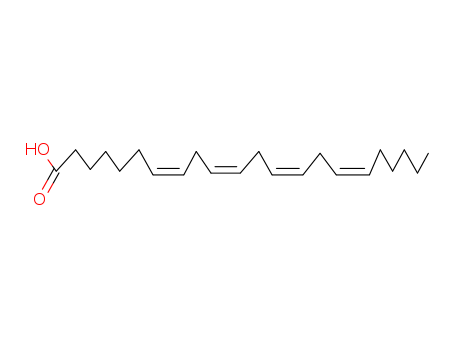Technology Process of 7,10,13,16-Docosatetraenoic acid
There total 6 articles about 7,10,13,16-Docosatetraenoic acid which
guide to synthetic route it.
The literature collected by LookChem mainly comes from the sharing of users and the free literature resources found by Internet computing technology. We keep the original model of the professional version of literature to make it easier and faster for users to retrieve and use. At the same time, we analyze and calculate the most feasible synthesis route with the highest yield for your reference as below:
synthetic route:
- Guidance literature:
-
With
hydrogenchloride;
In
diethylene glycol dimethyl ether;
at 120 ℃;
for 1h;
Yield given;
- Guidance literature:
-
Multi-step reaction with 5 steps
1: 65 percent / LiAlH4 / diethyl ether / 3 h / Ambient temperature
2: 82 percent / PPh3*Br2 / acetonitrile
3: 1.) Na / 1.)diglyme 2.) diglyme 140 deg C, 2h
4: 40percent aq NaOH / H2O; ethanol / 4 h / Ambient temperature
5: 1.5 M HCl / bis-(2-methoxy-ethyl) ether / 1 h / 120 °C
With
hydrogenchloride; sodium hydroxide; lithium aluminium tetrahydride; sodium; triphenylphosphine dibromide 1:1 addition complex;
In
diethyl ether; ethanol; diethylene glycol dimethyl ether; water; acetonitrile;
- Guidance literature:
-
Multi-step reaction with 4 steps
1: 82 percent / PPh3*Br2 / acetonitrile
2: 1.) Na / 1.)diglyme 2.) diglyme 140 deg C, 2h
3: 40percent aq NaOH / H2O; ethanol / 4 h / Ambient temperature
4: 1.5 M HCl / bis-(2-methoxy-ethyl) ether / 1 h / 120 °C
With
hydrogenchloride; sodium hydroxide; sodium; triphenylphosphine dibromide 1:1 addition complex;
In
ethanol; diethylene glycol dimethyl ether; water; acetonitrile;





